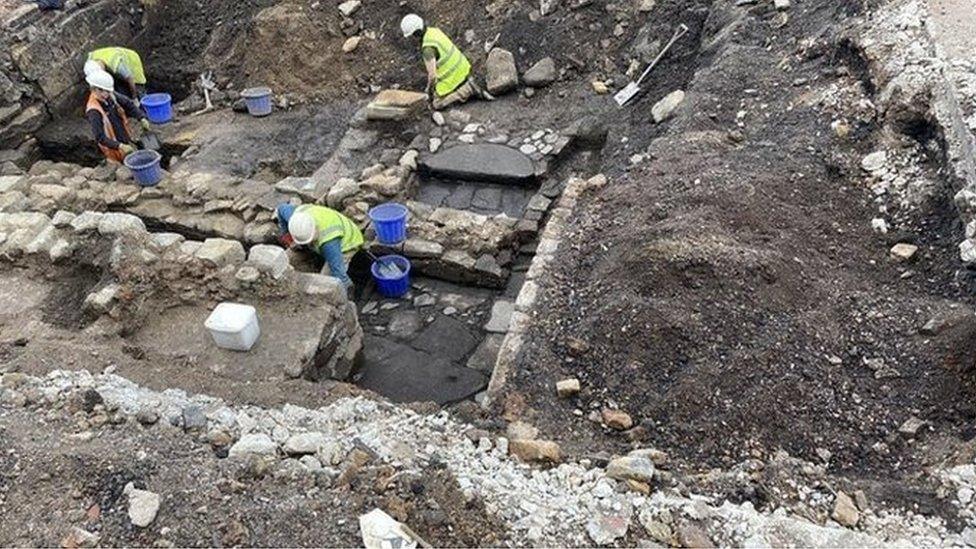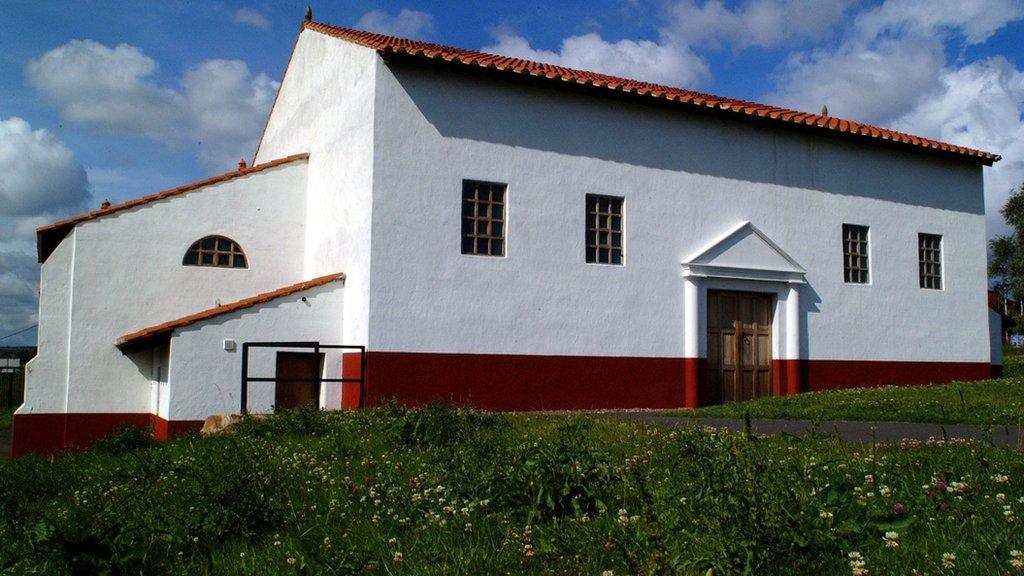17th Century building remains unearthed along Gateshead riverside
- Published

Archaeologists were able to examine the remains of the buildings along the riverbank at Pipewellgate, Gateshead
Remains of buildings which stood on the banks of the Tyne hundreds of years ago have been unearthed.
The discovery was made at the site of the former Brett Oils depot in Gateshead, which is being replaced with two apartment blocks.
The foundations of a 19th Century iron foundry and glass works were found, as well as the remains of buildings dating back to the 17th Century.
The oil depot closed in 2004 and has since been flattened for redevelopment.
Medieval past
Peter Carne, from Durham University Archaeological Services, said the riverside was the "heartland" of Gateshead's once-thriving industries in the 19th Century, with glassmaking employing about 500 people in the mid-1800s.
"Beneath the foundations of these factories are the remains of earlier buildings, dating back into the 17th and 18th centuries," he added.
"Uncovering the stone walls and cobbled paths of these structures has shown that the area was densely packed with buildings all along this part of the riverbank. The buildings were probably rebuilt from time to time when the area was flooded.
"People lived and worked in this area before the big factories were built, probably since the medieval period, engaged in all sorts of small scale-industries and occupations, reflected in the small buildings uncovered, separated by alleyways leading from the street down to the river."
Archaeologists were able to examine the remains of the buildings along the riverbank at Pipewellgate, the Local Democracy Reporting Service said.
The site of the former oil depot is being redeveloped into Brett Wharf, which will see more than 250 homes being built, as well as office space.

Follow BBC North East & Cumbria on Twitter, external, Facebook, external and Instagram, external. Send your story ideas to northeastandcumbria@bbc.co.uk, external.
- Published8 July 2014
